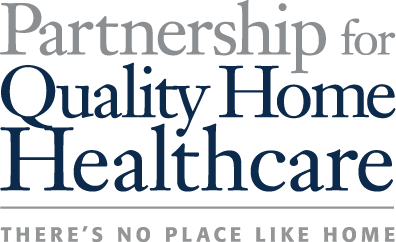June 1, 2015
Misconceptions and Margins
Posted in: News
Morning Consult
It’s a common occurrence: faced with pressing needs and limited resources, Congress and the Obama Administration cut Medicare funding. And, just as frequently, the targeting of those cuts is based on margins that impacted providers are perceived as enjoying.
But what if those perceptions aren’t fully informed? In that case, key decisions would be made on the basis of incomplete information – putting seniors, providers and potentially even the Medicare program as a whole at risk.
The Medicare home health benefit offers a case in point. The Medicare Payment Advisory Commission (MedPAC) has estimated that home health agencies (HHAs) are routinely basking in the glow of double-digit profit margins. For example, MedPAC’s HHA margin estimates for 2014 was 12.6 percent and for 2015 is 10.3 percent. Based on this projection alone, any responsible policy maker would conclude that deep Medicare funding cuts to the program’s home health benefit are in order.
But nothing – margin estimates included – are ever quite as simplistic as they may seem.
According to financial reports that publicly-traded home health agencies must file with the U.S. Securities and Exchange Commission (SEC), HHAs’ overall margins are in fact substantially lower. In 2014 alone, the average overall margin of the home health providers who are among the largest and best-capitalized in the sector wasn’t 12.6 percent, as MedPAC projected.
It was 2.4 percent.
Of equal concern, MedPAC has noted that small HHAs – many of which serve rural communities – experience margins that are even lower than those posted by their large counterparts. That means that small HHAs (of which there are thousands who collectively serve an estimated 3 million seniors) have actual margins that are below 2.4 percent.
The reality, then, is that Medicare home healthcare providers operate on margins that are alarmingly thin.
As bad as this situation is, it appears to be getting even worse. Right now, HHAs are being hit with an annual -3.5 percent cut that is being implemented under the authority of the Affordable Care Act. Overall, this -3.5 percent cut is to be imposed each year for four years (2014-2017), meaning that HHAs are not even midway through a total four-year cut of -14 percent. And that means that many HHAs are being forced to consider closure.
Take Asher Home Health, for example.
In Wheeler County, Oregon, Asher Home Health Services is the sole provider of skilled home health care in the town of Fossil and in rural areas of the county. Asher’s dedicated clinical team has long delivered high quality, cost-effective clinical services to homebound residents, helping them remain at home and avoid institutionalization in distant facilities.
Today, however, net losses resulting from the -3.5 percent annual Medicare rebasing cut are threatening Asher’s survival. Recently, Asher met to decide whether they would have to close their doors. Fortunately for the community they serve, Asher is trying to make one more go of it. In an effort to make ends meet, Asher’s limited staff will be working around the clock, without the benefit of sufficient backup and often at below-market wages, all to help seniors receive the clinical treatment they need in the setting they most prefer – their homes.
If Asher Home Health Services and other home health agencies like it can’t keep their heads above water, seniors will not be the only ones who will suffer. Their families will suffer too, when their loved ones are left without any options but to be institutionalized for the treatment they need. Taxpayers will suffer as well, because institutional care is documented as being much more expensive than skilled home healthcare. And that added cost will imperil the very program that the cuts were supposed to help – Medicare.
So, how should policy makers approach margins data to ensure that their perceptions are accurate?
First, it is important to note, as Avalere Health recently reported, that MedPAC’s margin estimates are not intended to serve as a measure of any sector’s or provider’s actual and overall profit/loss. They are often interpreted as such, though.
Second, financial statements filed with the SEC provide important data that need to be considered. Thanks to protections built into federal law, all publicly-traded companies must file these statements with the SEC, and the reports must be independently audited to ensure they are correct. Federal law also imposes steep penalties for the submission of any false or misleading data – penalties that could include up to five years in prison for the chief executives of the filing companies. As a result, SEC filings are considered to be rock-solid indicators of a company and sector’s actual economics.
Policymakers have already cut deeply into Medicare funding for home healthcare and other services, perhaps based in part on MedPAC margin data. As a result, it’s appropriate that decisions they make in the future be based not solely on perceptions, but on the most complete data available.
With that commonsense step, misperceptions may no longer plague their assessment of provider margins, leading to better policy and better outcomes.
Eric Berger is the CEO of the Partnership for Quality Home Healthcare, a coalition of the nation’s leading home health innovators.
